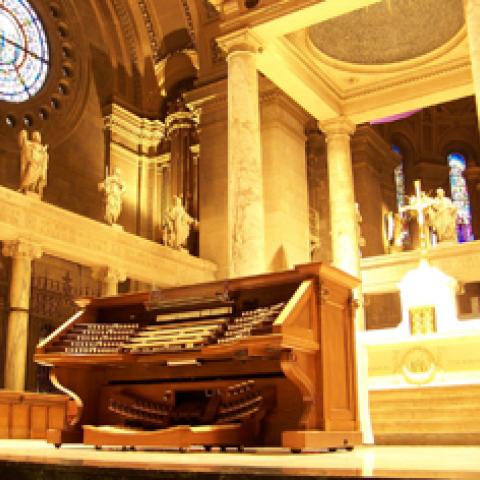
The Basilica of St. Mary, the Co-Cathedral of the Archdiocese of St. Paul-Minneapolis, Minnesota, is hosting a yearlong celebration of the 65th anniversary of the dedication of its “Centennial Organ,” Wicks Organ Company Opus 3047. The initial program, October 15, featured organists Kim Kasling, Christopher Stroh, and Robert Vickery playing works from the inaugural recital by Mario Salvador, October 15, 1950.
Upcoming events:
November 8, Three Chorales of César Franck, commemorating the 125th anniversary of Franck’s death;
April 15, 2016, organ and choral works by Maurice Duruflé;
October 15, 2016, Basilica Cathedral Choir and Brass under the direction of Teri Larson and basilica organist Christopher Stroh.
For information: www.mary.org.
Photo credit: Scott Shepherd



